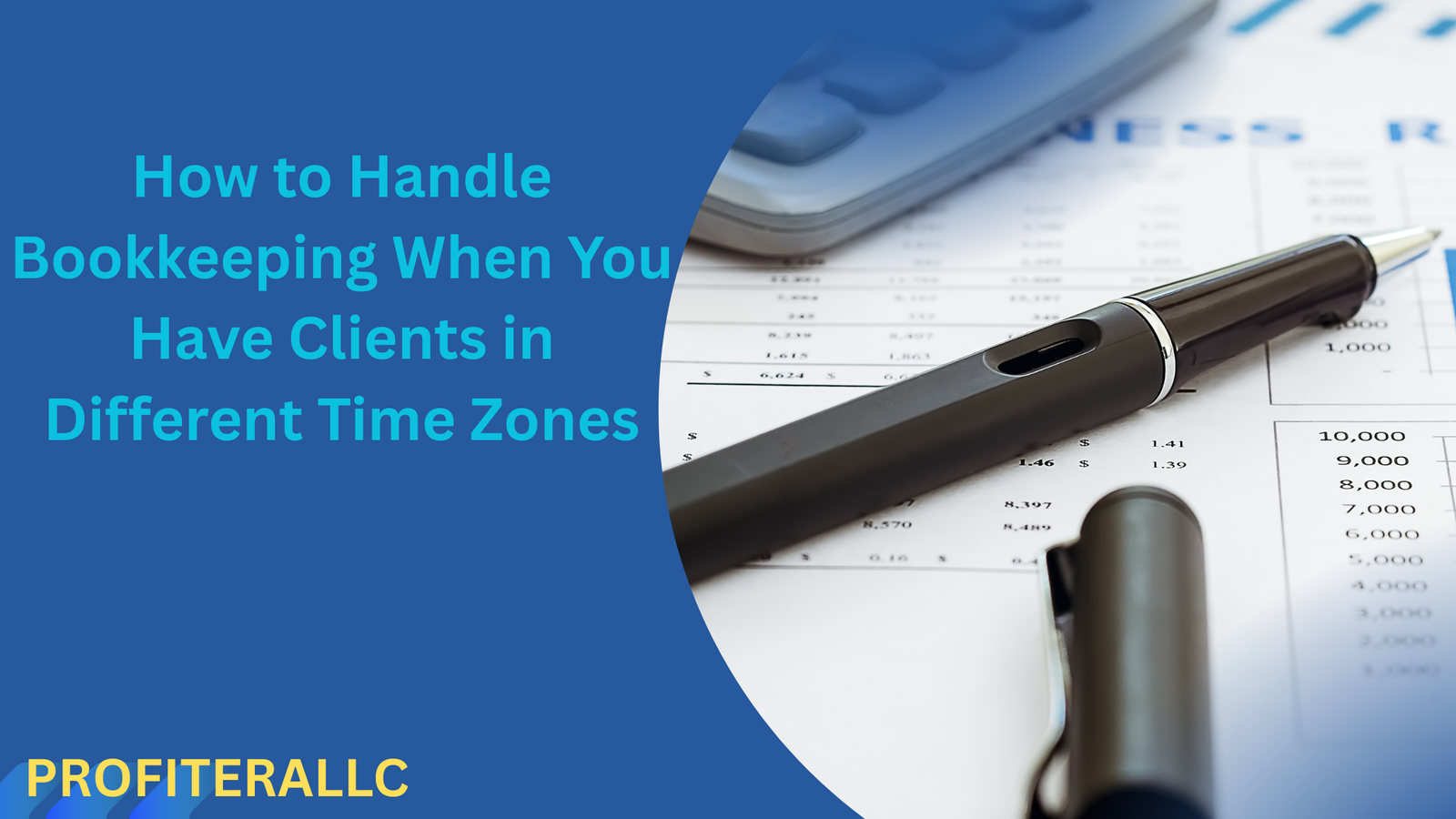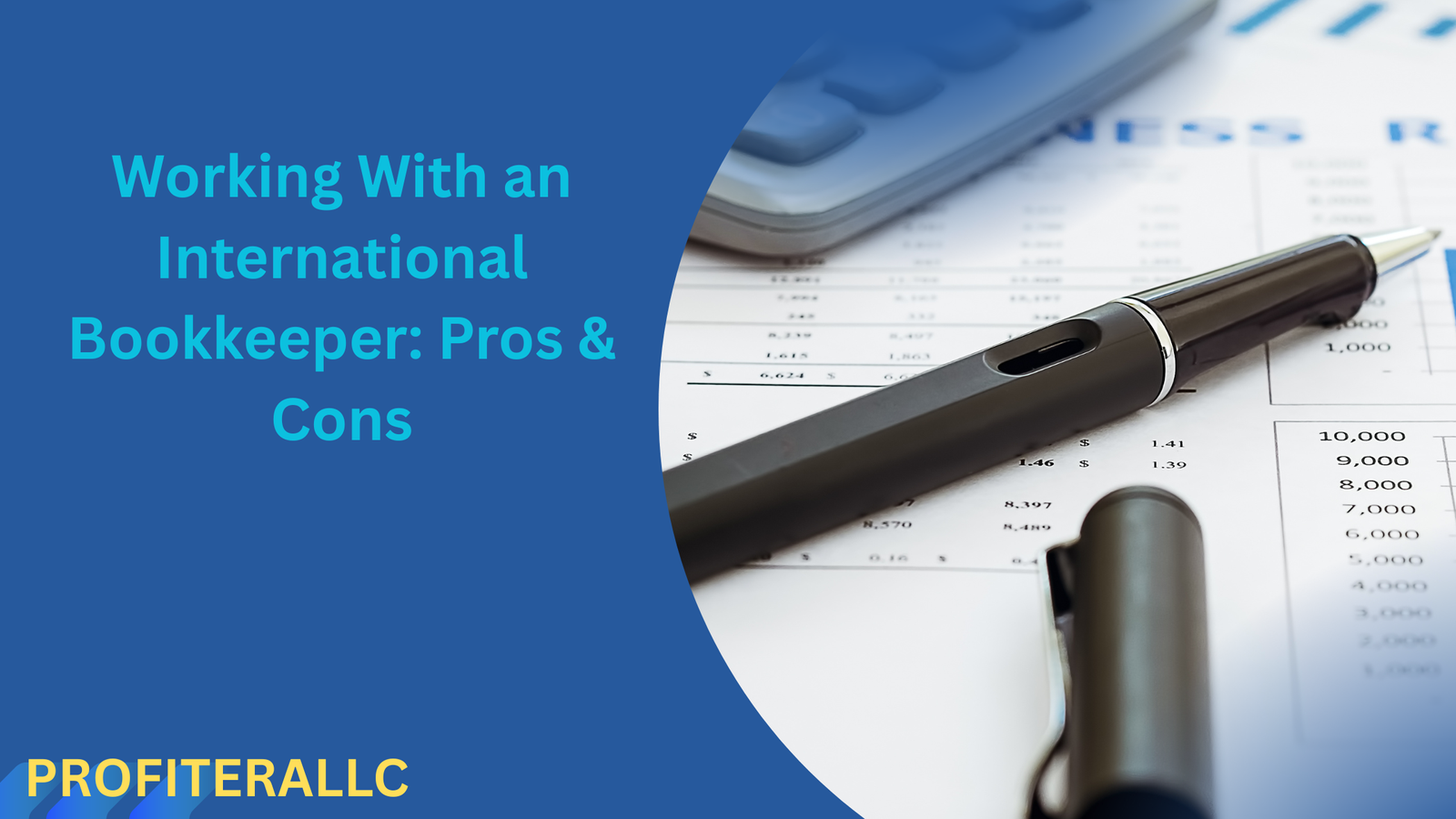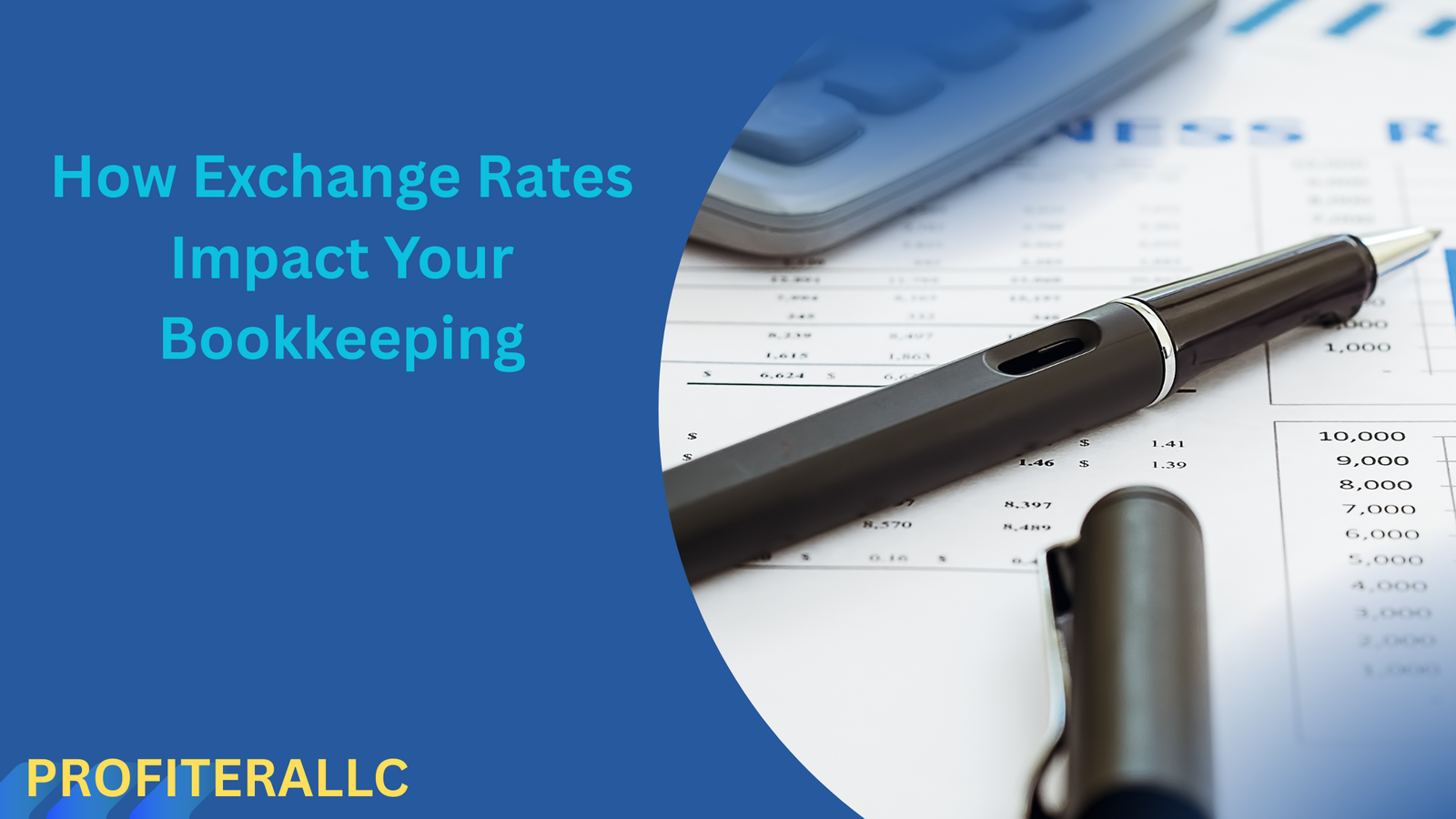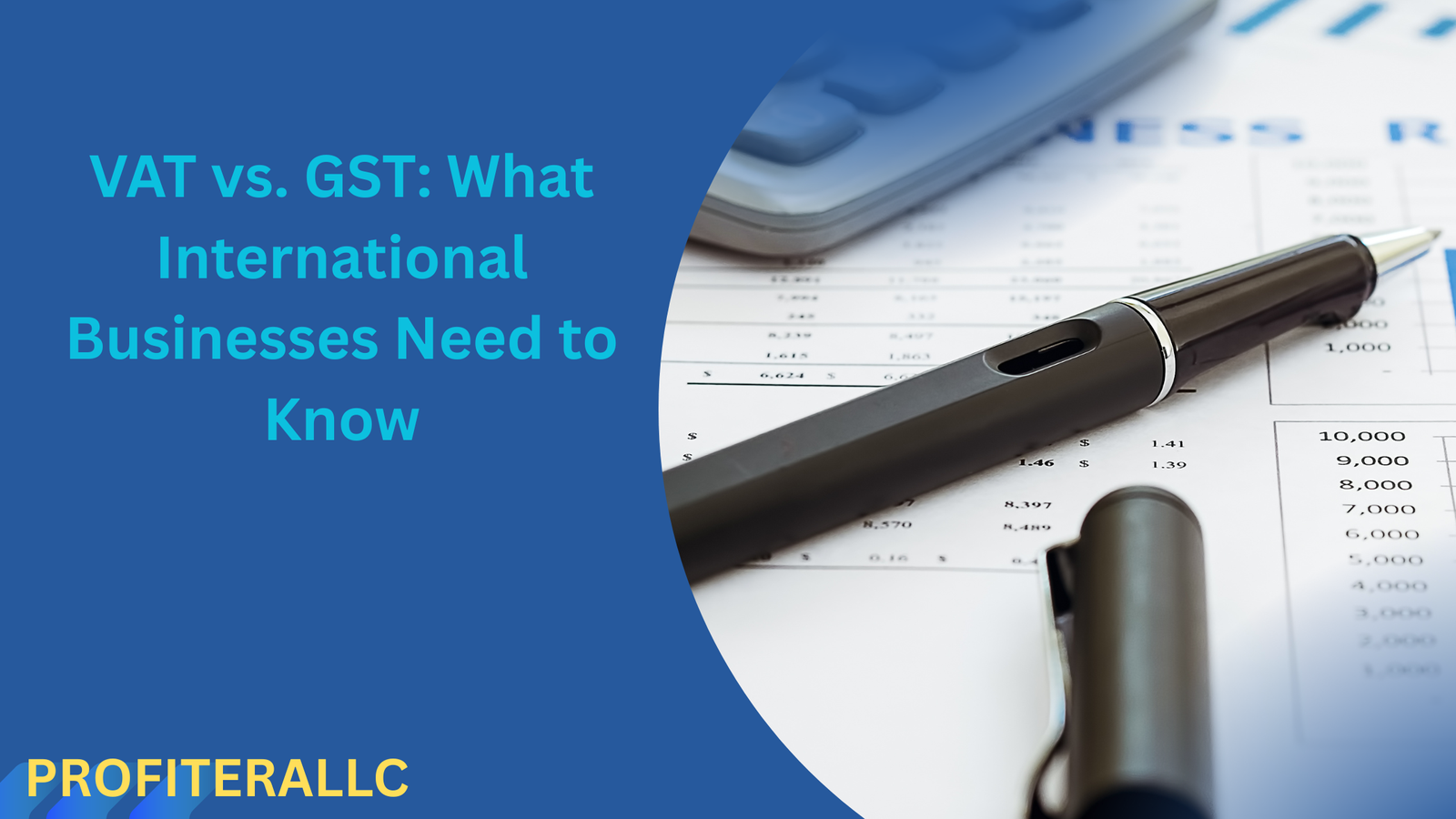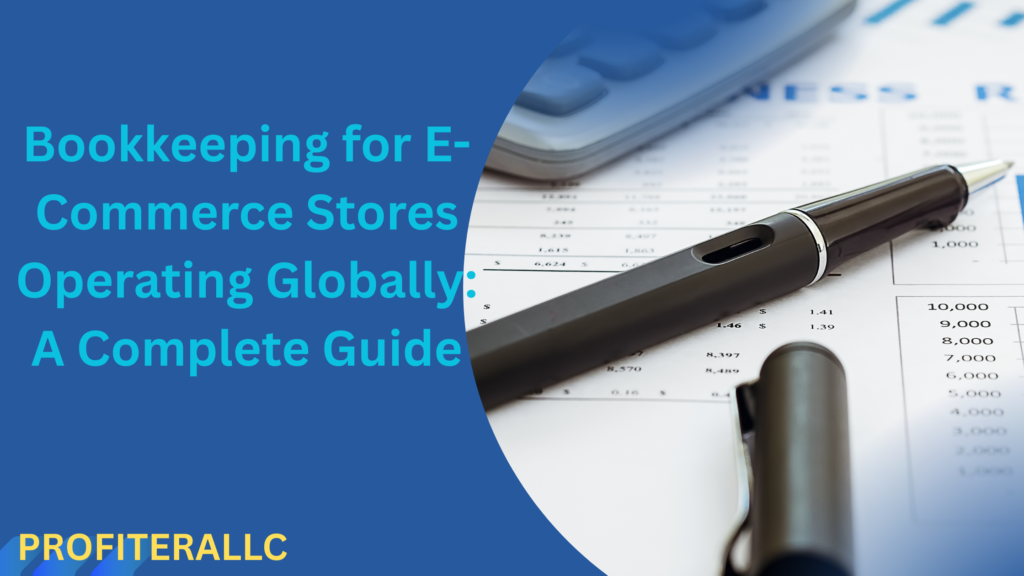
Introduction
As an e-commerce business owner expanding globally, you face enormous opportunities—and complex financial challenges. Whether you’re dropshipping from China, selling handmade goods on Etsy, or running a Shopify store with warehouses in multiple countries, bookkeeping becomes the backbone of your financial success.
In this guide, we’ll cover everything you need to know about bookkeeping for e-commerce stores operating globally, from compliance and tax obligations to multicurrency accounting, software tools, and best practices.
Why Global E-Commerce Needs Specialized Bookkeeping
Bookkeeping isn’t just about recording income and expenses—it’s about maintaining control, ensuring compliance, and supporting growth. When you operate globally, the stakes get higher:
- Multiple currencies and conversions
- International sales taxes and VAT
- Cross-border shipping and customs costs
- Foreign bank accounts and payment gateways
- Regulatory compliance in multiple jurisdictions
Without a solid bookkeeping system, it’s easy to make costly mistakes, misreport income, or overspend on taxes.
Key Challenges in Global E-Commerce Bookkeeping
1. Multicurrency Transactions
Selling to customers in the US, UK, Canada, or EU? Each sale might be in a different currency. You need to:
- Track exchange rates at the time of each transaction.
- Record gains/losses due to currency fluctuations.
- Ensure consistency between your payment gateways (PayPal, Stripe, Shopify Payments) and your books.
2. International Tax Compliance
Each country has its own rules around:
- Value-added tax (VAT) in the EU
- GST/HST in Canada
- Sales tax in US states
Mistakes can lead to fines, interest, or audits. Bookkeeping must separate taxes collected, remitted, and owed by region.
3. Inventory and COGS Across Borders
Managing inventory stored in multiple countries involves:
- Import/export duties
- Shipping and warehousing costs
- Accurate calculation of Cost of Goods Sold (COGS) per region
A robust bookkeeping system tracks where inventory is stored, how much it costs, and what it’s worth.
4. Multiple Payment Gateways
Each platform charges different:
- Transaction fees
- Currency conversion fees
- Payout timelines
Proper reconciliation of these accounts ensures accuracy in your revenue reporting.
Bookkeeping Best Practices for Global E-Commerce
1. Use Cloud-Based Accounting Software
Cloud software is a must. It offers real-time tracking, easy collaboration with accountants, and seamless integrations.
Top tools for global e-commerce:
- Xero – Great for multicurrency and Shopify integration
- QuickBooks Online – Ideal for US-based businesses
- A2X – Bridges Amazon, Shopify, and QuickBooks/Xero
- Zoho Books – Affordable and GST/VAT ready
2. Automate with Integrations
Manually reconciling Amazon sales or PayPal payments is tedious and error-prone. Automate data flow by integrating:
- E-commerce platforms (Shopify, WooCommerce, Amazon)
- Payment processors (PayPal, Stripe, Square)
- Inventory management tools (DEAR, TradeGecko)
This reduces human error and saves dozens of hours per month.
3. Track Key Financial Metrics
Don’t just focus on revenue. Important metrics include:
- Gross Profit Margin
- Return on Ad Spend (ROAS)
- Average Order Value (AOV)
- Inventory Turnover
- Customer Acquisition Cost (CAC)
Bookkeeping data feeds into these KPIs and helps in decision-making.
4. Separate Business and Personal Finances
Use dedicated business bank accounts and cards. This ensures clean, auditable records and simplifies tax filings.
5. Record Transactions in Real Time
Set a daily or weekly schedule for logging:
- Sales
- Refunds
- Expenses
- Inventory updates
- Tax collected
Real-time updates keep your data accurate and actionable.
Understanding Global Tax Obligations
1. VAT and GST
- EU: Must register for VAT in each country once thresholds are met.
- UK: Post-Brexit rules require careful VAT planning.
- Canada: GST/HST registration is mandatory for certain foreign sellers.
Track VAT paid and collected using a dedicated ledger or automation plugin.
2. US Sales Tax
With the Wayfair decision, economic nexus laws mean you must collect sales tax even without a physical presence in a state.
Use tools like TaxJar or Avalara to automate compliance and reporting.
Managing International Inventory and COGS
For global sellers, accurate COGS tracking is critical for profitability analysis.
Key tips:
- Record landed cost per product (including shipping, duties, warehousing).
- Use FIFO or weighted average costing methods.
- Reconcile inventory in your accounting software monthly.
Platforms like Cin7 or DEAR Systems integrate with accounting software to automate this.
Handling Payment Processors and Foreign Accounts
Payment platforms like PayPal, Stripe, and Shopify Payments can have:
- Currency conversion fees
- Delayed payouts
- Transaction disputes
Best practices:
- Sync payment processors with your books via APIs.
- Record fees separately for accurate profit analysis.
- Reconcile payout reports with your bank statements monthly.
If you use Wise (formerly TransferWise) or Payoneer for international banking, track incoming/outgoing transfers, conversions, and balances across currencies.
Hiring a Bookkeeper for Your Global Store
Managing your global e-commerce finances yourself is doable—but outsourcing to an experienced bookkeeper frees you up to focus on growth.
Look for:
- Experience with Amazon, Shopify, eBay, Etsy, etc.
- Familiarity with multicurrency accounting
- Knowledge of cross-border tax rules
Ask them about their process for handling:
- Amazon settlements
- Refunds and returns
- Currency conversion
- International tax filings
Year-End Bookkeeping Checklist
Before filing taxes or financial reports, complete this checklist:
✅ Reconcile all bank accounts and payment processors
✅ Finalize inventory count and update COGS
✅ Ensure all income and expenses are categorized correctly
✅ Prepare profit & loss and balance sheet reports
✅ Verify VAT/sales tax remittances
✅ Review for duplicate entries or missing transactions
Doing this ensures a clean year-end close and a smooth tax season.
Final Thoughts
Global e-commerce is an exciting frontier—but one that demands tight financial control. With the right bookkeeping practices, tools, and professionals, your business can:
- Scale with confidence
- Stay compliant internationally
- Maximize profit margins
- Avoid financial pitfalls
Take time to build or refine your bookkeeping foundation—it’s not just a backend task, but a core strategy for long-term success.



